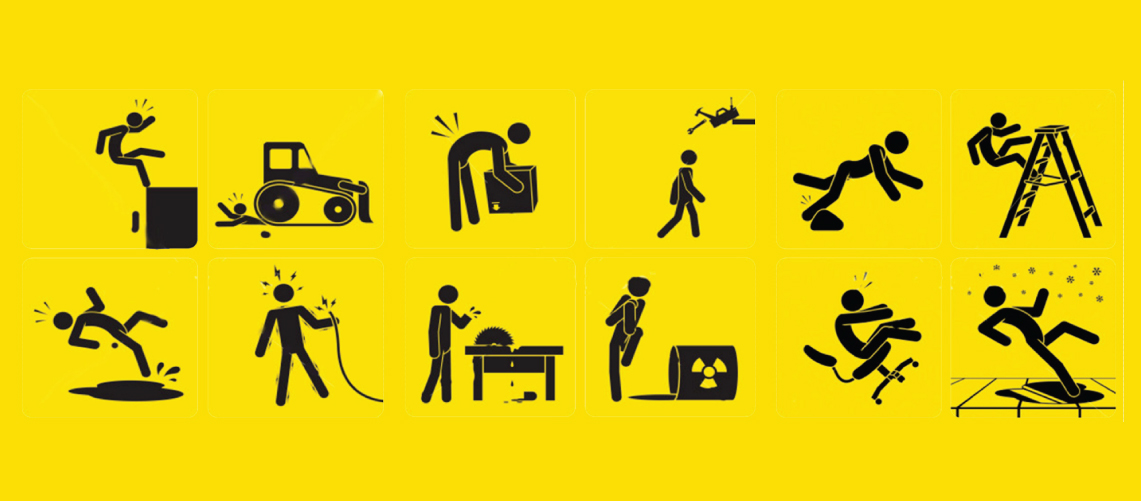Globally, employees in all industry sectors are exposed to various types of workplace hazards at one point of time or other. While some of them may not be endangering, the remaining ones have the potential to harm workers. These hazards can prove to be costly as they are likely to cause
accidents, physical injuries, damage to the property and downtime resulting in decreased workplace productivity. However, better preparation to control or eliminate these hazards and precautionary measures can prevent many catastrophic events.
It is important to note that workplace safety cannot exist merely by devising best practice guidelines and policies. A safe working environment largely depends on how both the employees and management adhere to and communicate the formulated safety standards.
Therefore, the foundation of successful workplace safety is one that encourages employees to
- Be consciously aware of their surroundings
- Identify unsafe behaviors and create fool-proof opportunities for improvement
- Proactively make well-informed safety decisions for performing routine tasks.
- Have a well-equipped first aid in the workplace for employee safety in case of eventualities.
Five Common Workplace Hazards
Main categories of workplace hazards include
- Safety Hazards: This includes unreliable and unsafe working conditions that that can result in injury, ailments or even fatality. Examples are
- Things that cause falls, trips and spills
- Unguarded machines or moving parts that are prone to be touched accidentally
- Electrical hazards that cause shocks like exposed wires, frayed cords, missing earthing and improper wiring
- Suffocating, isolated and confined workstations
- Biological Hazards: These expose the employees to dangerous pollutants and toxic substances while working with animals, people, infectious plant materials, chemicals and the like. Examples include infected blood and other body fluids, fungus, molds, bacteria and viruses, insect bites and animal faeces or bird droppings.
- Physical Hazards: These are environmental factors that can harm the human body without physical contact. Examples include high exposure to radiations, sunlight, ultraviolet rays, extreme temperatures and noise pollutants.
- Ergonomic Hazards: These hazards cause harmful effects as the type of work, body positions and working conditions strain the body physically. They are not easily identifiable and their effects may not be immediately visible. Examples include uncomfortable workstations and seating arrangements, poor postures, constant weight bearing, repetitive awkward movements and vibrations.
- Chemical Hazards: Many workers may be exposed to several chemicals in various forms(solid/liquid/gas). These may cause illness, skin irritation, breathing problems or even choking.
Examples include
- Unlabeled or poor-quality cleaning products, paints, acids, solvents
- Vapors and fumes originating from welding process or exposure to solvents
- Gases mixed with acetylene, propane, carbon monoxide or helium
- Flammable substances like gasoline, solvents and explosive chemicals
- Insecticides and pesticides
Workplace First Aid Kits
Healthcare Policies and Regulations mandate employers to provide adequate and appropriate medical equipment, facilities and trained personnel to ensure that their employees get immediate attention at the workstations when injured or ill. For this, it is compulsory to have the First Aid Kits adequately stocked at the workplace which includes
- First Aid Manual
- Disposable gloves
- Resuscitation masks
- Sterile adhesive dressings, eye pads, coverings, wound dressings and saline solution
- Bandages
- Safety pins
- Non-allergenic tape
- Scissors and tweezers
- Book for recording details of first aid provided
- Disposable plastic bags for waste collection
It is also important to have ‘round-the-clock’ Ambulance Services on the workplaces that are present on the premises or available ‘on-call’. For this, employers can available the services of Medical Transport in the event of an employee's injury or illness. Reliable private ambulance services may be used in emergencies. Non-Emergency Medical Transportation (NEMT) may also be availed in non-critical situations where the employee need medical care and support during travel to ensure a completely safe and comfortable journey.



